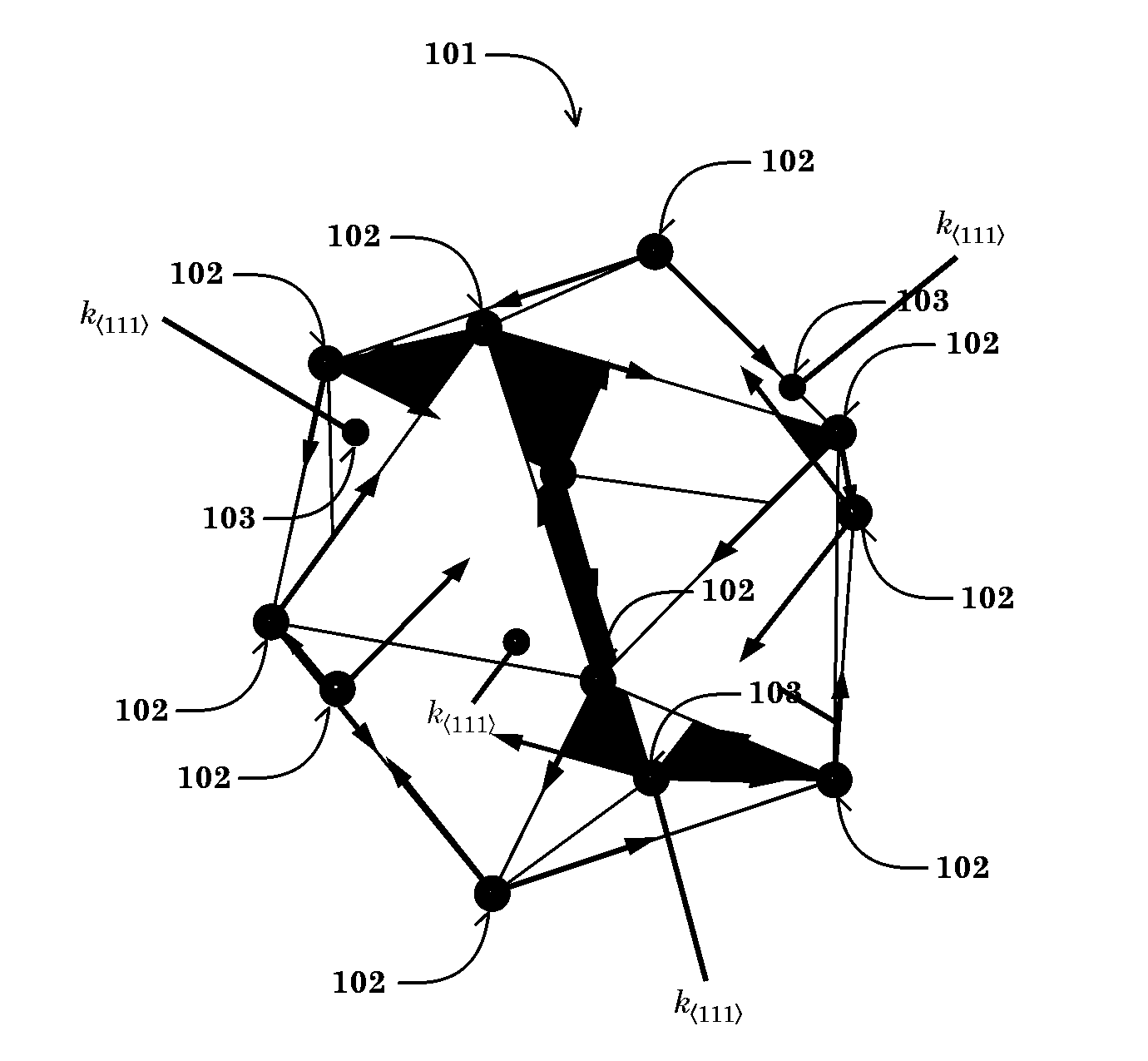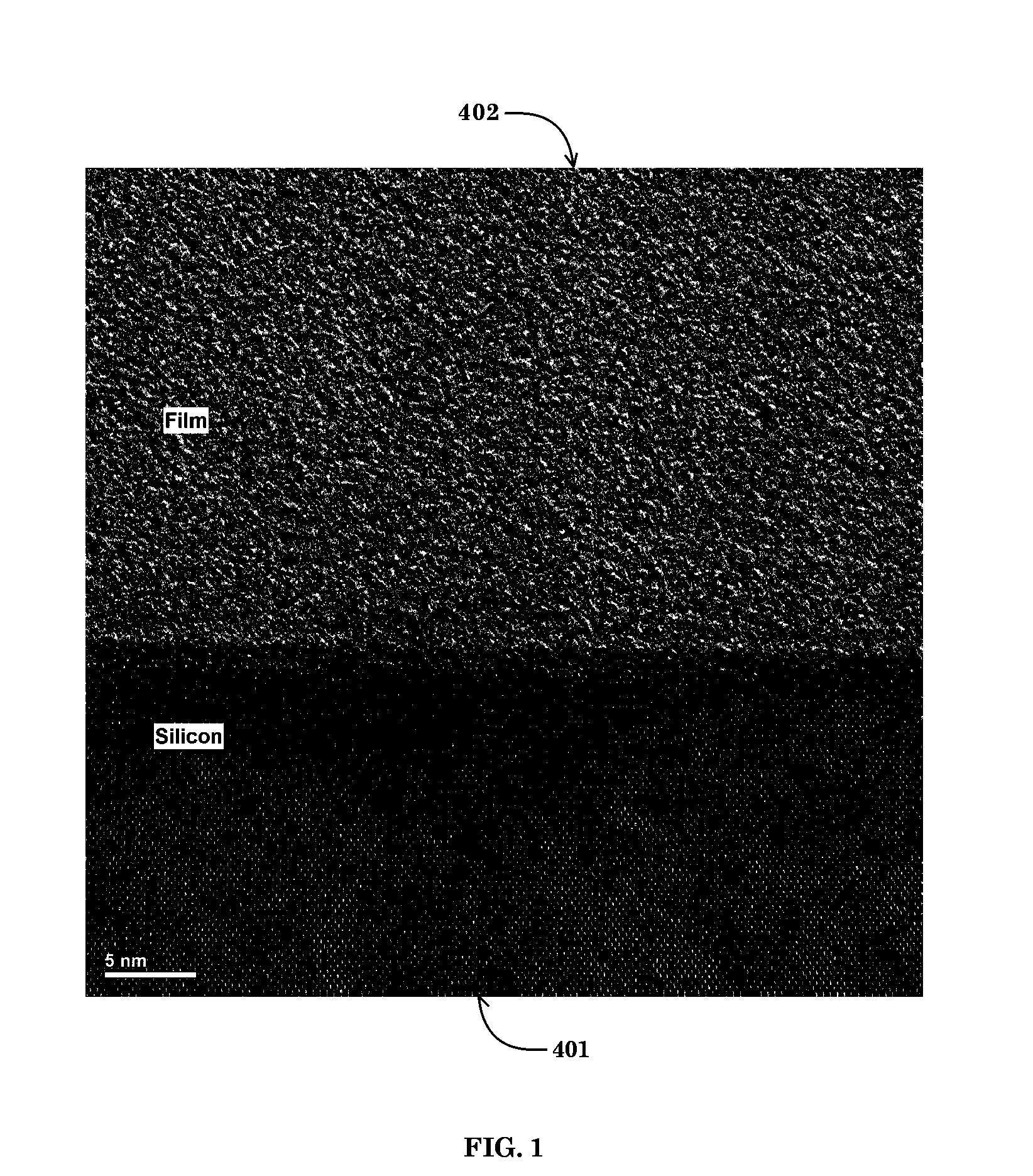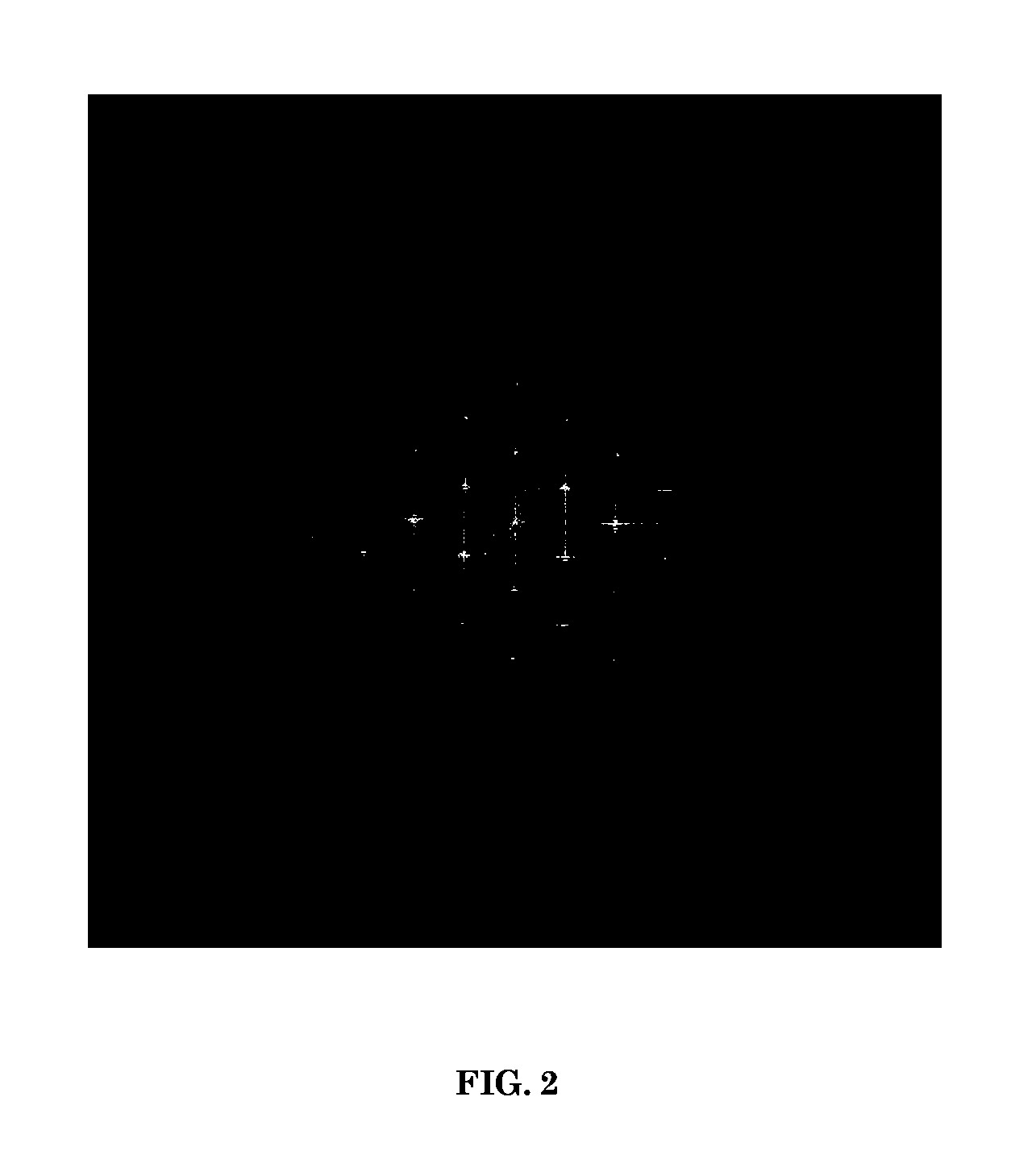Composition and method for making picocrystalline artificial carbon atoms
a technology of artificial carbon atoms and composition, which is applied in the direction of crystal growth process, non-metal conductors, group 3/13 element organic compounds, etc., can solve the problems of affecting practical applications, affecting the practical application of nonlinear nuclear configurations, and inability to combine these materials with monocrystalline silicon, etc., to achieve short range and long-range order
- Summary
- Abstract
- Description
- Claims
- Application Information
AI Technical Summary
Benefits of technology
Problems solved by technology
Method used
Image
Examples
example 1
[0079]FIG. 1 shows a micrograph obtained by high-resolution transmission electron microscopy (HRTEM) of a picocrystalline borane solid 402 deposited on a monocrystalline (001) silicon substrate 401. The interfacial layer 403 is due to the specific conditions of its deposition. An HRTEM fast Fourier transform (FFT) image of the monocrystalline silicon substrate 401 is shown in FIG. 2. A similar FFT image of the picocrystalline borane solid 402 is shown in FIG. 3. Whereas the FFT image of the silicon substrate 401 in FIG. 2 is characteristic of a monocrystalline (001) silicon lattice with a long-range periodic translational order, the FFT image of the picocrystalline solid 402 within FIG. 3 exhibits a short-range order that is not characteristic of either a monocrystalline lattice or an amorphous solid. The various types of order will now be further defined.
[0080]To illustrate the short-range order of the picocrystalline borane solid 402, the HRTEM diffraction intensity of the monocry...
example 2
[0096]A diamond-like picocrystalline silaborane unit cell 300 is constructed by replacing each silicon vertex atom 201 in the monocrystalline silicon unit cell 200 with a borane molecule B12H4 101 per FIG. 11. The 8 borane molecules B12H4 101 at the vertices of the silaborane unit cell 300 in FIG. 11 are shared amongst 8 picocrystalline silaborane unit cells 300 in a solid lattice. As the result, a periodic translation of the picocrystalline silaborane unit cell 300 over space results in a solid picocrystalline silaborane (B12H4)Si7 lattice, which effectively behaves as a self-assembled diamond-like picocrystalline lattice structurally similar to mono-crystalline silicon. Borane molecules B12H4 101 replace the 8 silicon vertex atoms 201 in the picocrystalline silaborane (B12H4)Si7 lattice since the boron nuclei 102 remain motionless in the symmetrical nuclear configuration while the hydrogen nuclei 103 vibrate along the k(111) wave vectors of the four (111) threefold axes.
[0097]Per ...
example 3
[0134]Phosphorous was diffused into the 100 mm diameter monocrystalline (001) p-type silicon substrate 404 with a resistivity of 15 Q-cm so as to result in an 8.7 ohm per square resistance, as measured by a four-point probe. The oxide was removed from the sample wafer by a hydrofluoric acid deglaze. The sample was inserted into a rapid thermal chemical vapor deposition (RTCVD) chamber of the type described by Gyurcsik et al. in “A Model for Rapid Thermal Processing,”IEEE Transactions on Semiconductor Manufacturing, Vol. 4, No. 1, 1991, p. 9. After loading the sample wafer onto a quartz ring, the RTCVD chamber was then closed and mechanically pumped down to a pressure of 10 mtorr. A 3% mixture, by volume, of diborane in hydrogen B2H6(3%) / H2(97%) at a flow rate of 364 sccm and a 7% mixture, by volume, of monosilane in hydrogen SiH4(7%) / H2(93%) at a flow rate of 390 sccm were introduced into the evacuated RTCVD deposition chamber.
PUM
 Login to View More
Login to View More Abstract
Description
Claims
Application Information
 Login to View More
Login to View More - R&D
- Intellectual Property
- Life Sciences
- Materials
- Tech Scout
- Unparalleled Data Quality
- Higher Quality Content
- 60% Fewer Hallucinations
Browse by: Latest US Patents, China's latest patents, Technical Efficacy Thesaurus, Application Domain, Technology Topic, Popular Technical Reports.
© 2025 PatSnap. All rights reserved.Legal|Privacy policy|Modern Slavery Act Transparency Statement|Sitemap|About US| Contact US: help@patsnap.com



